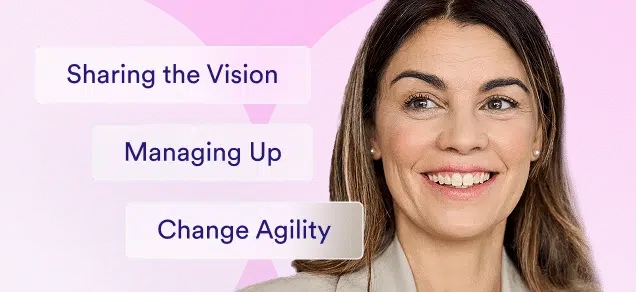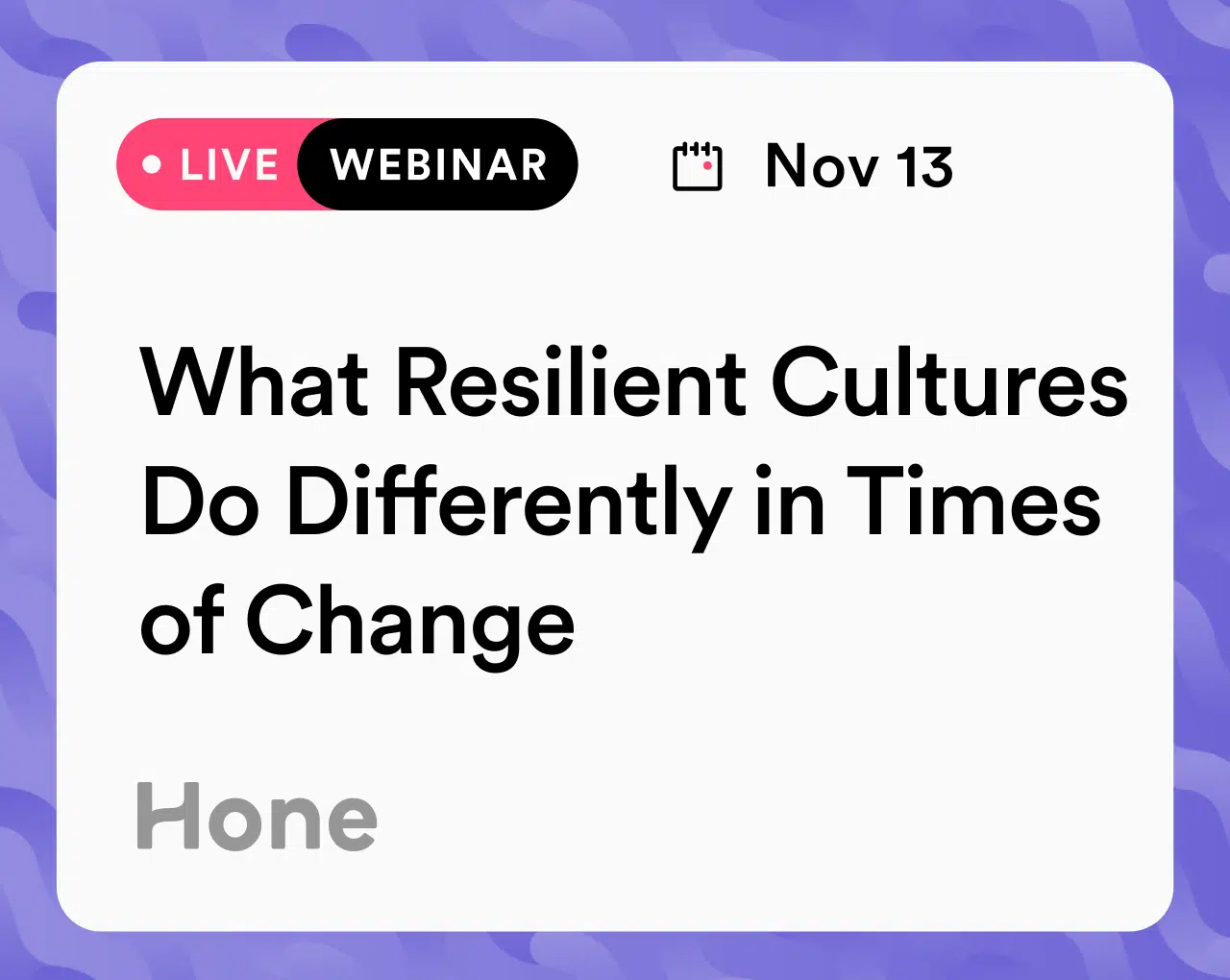There are two foundational skills to successfully building a culture of belonging: vulnerability and empathy. When these skills become the norm, they help foster a sense of emotional safety and leave employees and team members feeling respected and cared for. This environment lays the groundwork for a workplace culture of belonging.
That said, vulnerability — and listening and acting with empathy — can be hard skills to master. After all, they involve putting your whole self out on display for others, even when you don’t know how your audience will react, as well as keeping an open mind and trying to understand a new perspective. But without these foundational internal skills, it’s difficult to be intentional, show up as a workplace ally, or advocate for others.
Here’s a deeper look at vulnerability and empathy and how you can use them to create belonging in the workplace:
Vulnerability
Research professor and author Brené Brown defines vulnerability as an individual’s choice to fully engage and be seen during moments of risk, uncertainty, and emotional exposure. Vulnerability requires you to open up, be authentic, and embrace uncertainty, which is why it can be difficult to do.

If you take a moment to think back on any of the most courageous moments in your life, odds are you also felt vulnerable. It takes courage to put yourself out there, especially when you are unsure how others will react.
For example, someone might feel vulnerable when:
- Saying I love you to someone for the first time
- Speaking up about unethical behavior at work
- Confronting a friend to let them know they hurt their feelings
It takes courage to be willing to fully engage and be seen in moments of risk, uncertainty, and emotional exposure. It’s also important to note that vulnerability looks different for everyone, which can be especially true for people who come from different backgrounds and levels of privilege. For example:
- For a person of “privilege”: A white male manager could feel vulnerable when delegating tasks – or in his mind, giving up his control. He might have to work on trusting his teammates to perform and handing off his responsibilities more frequently.
- For a person in a position of less privilege: A Black woman in a predominantly white office could feel vulnerable about speaking up or sharing an unpopular opinion for fear of being misunderstood, judged, or excluded. She could express her feelings of exclusion to her manager and work towards building a more inclusive work environment together.
The Vulnerability Spectrum
At Hone, we think about vulnerability as a continuum with three categories: “over-boundaried,” “authentic vulnerability,” and “oversharing.” Being vulnerable is all about finding a balance. Sharing too few details about your situation or experience can leave people confused and prevent them from connecting with your story. On the other hand, oversharing can leave people uncomfortable and unwilling to have a dialogue about your experience. Here’s what these three categories mean:
Over-boundaried: When someone is over-boundaried, they come off as guarded, distant, or withholding information. This makes it hard for people to connect with their experience or fully understand the gravity of their situation.

An example of an over-boundaried response:
“I worked on a team where I never really felt like my voice mattered. Whenever I offered a suggestion, it was ignored or accepted and never followed up on. I shut down, speaking only when it was relevant to my work until, ultimately, I left the team.”
Authentic Vulnerability: This is your sharing sweet spot. This is when you share just enough detail and personal emotion so that others can understand what you went through and connect with you.

An example of an authentic vulnerability response:
“I worked on a team where my opinions were often ignored. I was afraid that if I raised these issues to my boss, he would dismiss my feelings or even fire me. I didn’t feel like I had many allies on the team, so I just decided to stay quiet.
The whole experience left me feeling insecure about my performance and uncertain of how to behave at work. It was really hard for me. I realize now that it was a toxic work environment and that I was acting from a place of fear.”
Oversharing: Sharing too many extraneous details that can make our experiences and feelings murky and difficult to decipher. Oversharing makes it harder for others to connect with you, which can hinder your ability to have a 2-way discussion about your experience.

An example of oversharing:
“I worked on a team where my opinion was never considered. It was *$#&% infuriating! My boss was a sexist pig and didn’t value the opinions of a woman – especially not a Black woman! The most frustrating thing about that experience was that it led me to start talking negatively about them all of the time at home, which was one of several reasons my partner ended up leaving our relationship after four years.”
Empathy
Empathy is our ability to understand the feelings of another individual and to nonjudgmentally see the world as they see it. True empathy requires active listening, curiosity, an open mind, and the ability to shift your perspective to understand the way the other person experiences their life and the world around them. It’s the act of “putting yourself in someone else’s shoes,” so you can better understand their point of view, feelings, and needs.

Empathy, in particular, is an essential skill all managers need to better lead their teams. It can help you be a better leader to a diverse group of employees, help you anticipate problems, react quicker to their needs, and build lasting relationships with their direct reports.
In fact, one study named empathy the top skill good leaders possess and one of the three strongest predictors of senior executive effectiveness. Similar studies noted managers with high empathy and high emotional intelligence repeatedly outperform less emotionally savvy leaders.
Using Vulnerability and Empathy to Build a Culture of Belonging
Stories are particularly powerful tools. When it comes to building empathy on a team, stories allow people to share their own experiences and to learn from others. As a manager, when you provide a safe space where everyone has the opportunity to use their voice and be heard, you create an environment of trust and belonging.

Sharing stories allows an individual to make their audience aware of an issue they might not have previously considered. The two types of stories that really help drive a point home are (1) when we’ve felt excluded and (2) when we’ve felt a strong sense of belonging. When other people are vulnerable and share these types of stories with others, they open the door for others to have empathy. This space can open minds, shift perspectives, and even alter behaviors.
How Managers Can Facilitate Open and Candid Conversations
But, as discussed above, finding a balance between oversharing and remaining guarded can be tricky. To help you understand how to facilitate these open conversations on your team, take a moment to recall a time in your life when you felt like you did not belong. Some examples of experiences that could come to mind include:
- Being left off a project that you thought you should be involved in
- Not being invited when colleagues go out to lunch or socialize outside of work
- Witnessing your boss regularly give your colleagues opportunities that you are not given
- Not being included in meetings where your input would be beneficial
- Being told it’s not your place to speak up during meetings
Once a moment has come to mind, reflect on it, and answer the following questions:
- What was that experience like?
- How did others behave?
- How did you behave?
- How did it make you feel?
- What was the immediate and longer-term impact that it had on you?
If you’re on the listening end of a story, acknowledge what you’re hearing the other person say and share areas of resonance. Then, ask questions so you can better understand their situation and what could have made it better. Remember to listen deeply, focus on understanding their experience, and be non-judgmental.

After someone is done sharing, ask yourselves, “what might we do to fix this and prevent it from happening again?” This answer is the most important part of having these open and candid conversations: you want to incite change. Make a commitment to yourself, your colleagues, your employees, your team, and your company to do better: to change and to make lasting improvements to your culture, together. Only then can you use vulnerability and empathy to build a workplace culture of belonging.
—
This article is an excerpt of Hone’s “Embrace Diversity with Inclusion” class. To learn more about the science behind vulnerability and empathy, how to encourage others to share challenging experiences, and move the conversation forward with empathy, click here to register for an upcoming class.












